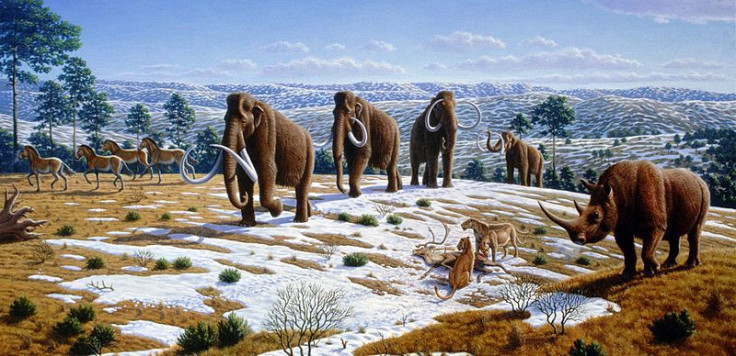How To Survive A Mass Extinction: Take A Cue From Cougars And Don’t Be A Picky Eater

The saber tooth tiger, the American lion and the cougar: All three of these prehistoric big cats roamed North America 12,000 years ago, but only one of them survived mass extinction. What was the cougar’s secret to escaping total annihilation?
New research says it was the cougar’s laid-back approach to eating. A recent study published in the journal Biology Letters found that of all the big cats, cougars were the least fastidious when it came to finding a meal.
"This suggests that the Pleistocene cougars had a 'more generalized' dietary behavior," Larisa R.G. DeSantis, an assistant professor of earth and environmental sciences at Vanderbilt University in Nashville and co-author of the study, said in a statement. "Specifically, they likely killed and often fully consumed their prey, more so than the large cats that went extinct."
Researchers studying the remains of several ancient cougars, American lions and saber tooth cats culled from the famous La Brea Tar Pits in Los Angeles wanted to figure out the role that diet played in the cougar’s survival. Scientists used high-powered microscopes to create three-dimensional images of tooth surfaces – a new technique called “dental microwear texture analysis.”
Wear patterns on the teeth provide clues about what the animals often ate. Small, parallel scratches, for instance, suggest a taste for red meat. Large, deeper grooves indicate that they gnawed on bones.
Through this analysis, DeSantis and her team found that American lions, which strongly resemble modern lions but were considerably larger, had a diet similar to that of contemporary cheetahs. Cheetahs are notably picky eaters that rarely chomp on bones.
The teeth of ancient cougars, however, showed evidence that the grandfather of modern cougars had a diet similar to that of hyenas, which eat all the parts of their prey, including the bones.
Researchers say this is consistent with the dietary habits of modern cougars, which are opportunistic predators. They often scavenge abandoned tissue and gobble up the entire carcasses of small and medium-sized prey.
In other words, cougars don’t care what’s in front of them as long as they won’t choke on it.
Before the Late Pleistocene extinction occurred some 12,000 years ago, the plains and forests of North America were home to six species of large cats. Only two – the cougar and the jaguar – made it out unscathed.
Other megafauna that once roamed North America were giant ground sloths, short-faced bears, giant condors and woolly mammoths.
© Copyright IBTimes 2024. All rights reserved.












